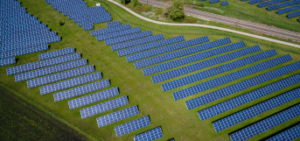
Savings and improvements to the overall policy structure of a regional employer
Excerpt Missing

Do rising consumer boycotts threaten corporate geopolitical neutrality?
Consumer boycotts are on the increase and can lead to substantial losses, yet they don’t fit neatly into risks traditionally modelled by insurers. This should change.

Political violence versus political risk insurance coverage
Understanding the difference between political violence and political risk insurance.

Whole of society approaches to improve preparedness for crises
As the Covid-19 crisis revealed hidden interconnections, it reinvigorated the debate around the need for “whole of society” approaches to risk and resilience.

Vulnerability a key driver of emerging-world climate policy commitments
Climate has always been a driver of political risk, and in extreme cases food and water are being weaponized for political reasons.

How to make hybrid work for everyone
Hybrid working has offered workers flexibility, but there are potential negative impacts on employees that employers need to manage.

Setting healthy boundaries is not quiet quitting
Quiet quitting remains a hot topic in the business and popular press as leaders continue to separate reality from hype.

How modeling and risk analytics can solve four hard market challenges
Modeling, risk analytics and more accurate property and business interruption valuations can help get more value from your property risk portfolio in tough conditions now and into the longer term.

Global Real Estate Risk Outlook 2024
This guide aims to assist with the management of property risks when premises become vacant or void.

The rise of AI in insurance – A double-edged sword
The increasing use of AI in making decisions that affect our daily lives will require a level of transparency that is explainable to employees and customers

Emerging risks: Managing the realities of e-scooters
E-scooters are an increasingly popular new form of transport, but what’s the legal standing of these vehicles versus the reality of how they’re used, and what risks does this generate?

Nature-related risks and opportunities: The new frontier for insurers
New report by the University of Cambridge Institute for Sustainability Leadership captures nature-related risks and opportunities for the insurance industry

The role of people and innovation during inflation and recession
During a time when inflationary pressures and recession concerns disrupt markets, elastic innovation continues to propel change while also creating stability and organizational resilience.

5 actions boards of directors should take to get started on the ESG journey
Boards of directors must play a critical role in ensuring businesses meet the demands of multi-stakeholder capitalism.

In elastic innovation, failing fast is learning fast
When it comes to elastic innovation, leaders increasingly talk about the concept of “failing fast.” The most effective leaders shift that mindset to “learning fast” through five actions.

Renewable Energy Market Review 2023
The impact of geopolitics, inflation and the energy transition on the industry.

How to protect your business from inflation and higher interest rates using trade credit insurance
Draft regulations on defined benefit pension funding would impose a narrow, simplistic and overly rigid framework, according to WTW.

Trade credit risk: Can data be used to better inform strategy?
Not having a full view of your organisation’s trade credit risk can leave it unnecessarily exposed and limit its growth. How might a company quantify trade credit risk and have strategic discussions around it?

Understanding construction risks and solutions
Willis Towers Watson has compiled this document to provide a general overview of the 5 main stages of a construction project,each stage identifying the typical issues encountered during Purchase, Design, Contracts, Build and Operation.

Insurance Marketplace Realities 2023: Construction
Certain high hazard exposures and contractors with challenging risk profiles will continue to experience rate increases, but the rate of these increases will be tempered as the market improves.

Aviation industry restart and safety resilience
Although the global COVID-19 pandemic has now delivered the biggest and longest shock to ever hit the aviation industry, airlines continued to show resilience on the safety front last year.

Business aviation and its commitment to ‘Net Zero’
The business aviation sector has taken consistent action to reduce its carbon footprint by leading aircraft innovation, the use of alternative fuels and on the ground improvements.

Greatest Business Risks for FMCG Organizations
Fast-moving consumer goods (FMCG) have their own risk profile, which can be quite different from other businesses. Even the everyday consumables we take for granted, can be subject to the changes of geopolitics, climate or other factors.

2023 Global Medical Trends Survey
The 2023 survey tracks medical costs from a global network of 257 insurers in 55 countries. Download the report for detailed findings across regions.

Political Violence: How Insurers Respond to Crises
Between 2017 and 2022, reflecting its increasing prevalence, the demand for insurance payouts for acts of political violence has risen sharply; from USD1.5 billion in 2017, to USD2.7 billion in 2022.

Quiet quitting: Old problem, new name
Quiet quitting is a new media buzzword, but is it the same old employee engagement problem by a different name? WTW experts discuss.

Savings and improvements to the overall policy structure of a regional employer
Quiet quitting is a new media buzzword, but is it the same old employee engagement problem by a different name? WTW experts discuss.

Corporate Health Insurance
Quiet quitting is a new media buzzword, but is it the same old employee engagement problem by a different name? WTW experts discuss.

The Future Of Insurance Is Digital
Quiet quitting is a new media buzzword, but is it the same old employee engagement problem by a different name? WTW experts discuss.

Political Violence: How Insurers Respond to Crises
Between 2017 and 2022, reflecting its increasing prevalence, the demand for insurance payouts for acts of political violence has risen sharply; from USD1.5 billion in 2017, to USD2.7 billion in 2022.


